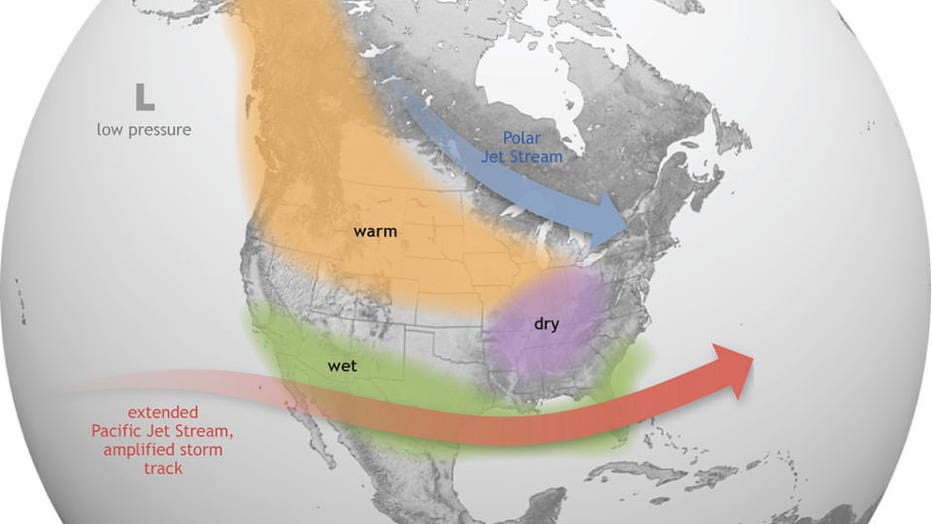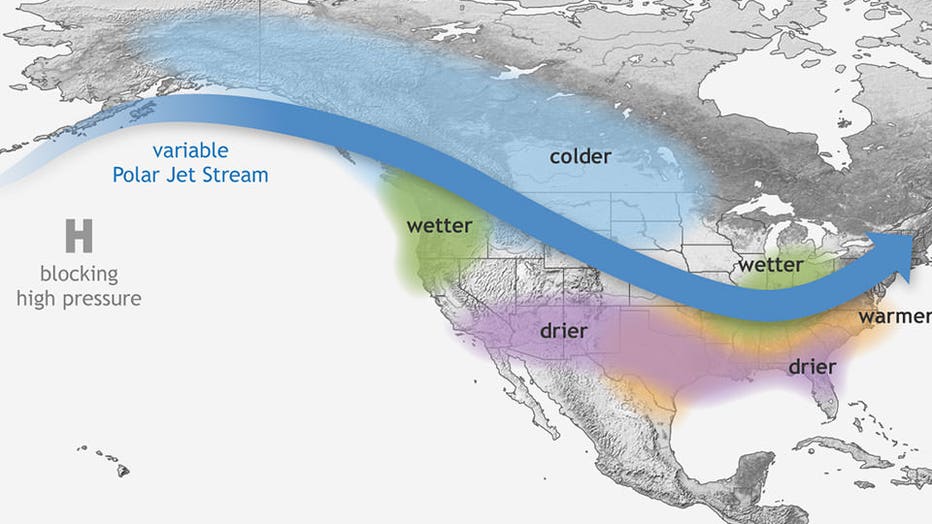Chicago winter forecast: La Niña pattern could bring colder, wetter conditions
La Niña pattern could bring colder, wetter conditions to Chicagoland
A weak La Niña is at play this year across the tropical pacific. Chicago is looking to be wetter than normal. We do not have a clear indication if temperatures will be warmer or cooler than normal. Wetter does not necessarily mean more snow! We may have all types of precipitation this winter depending on the temperature.
CHICAGO - Winter is still a couple of months away, but signs are pointing toward a colder and wetter winter than what the Chicago area experienced in the 2023-24 season.
The 2023-24 winter season was dominated by an El Niño weather pattern, and it was one for the record books. The winter months were marked by above-average temperatures and below-average snowfall. Last winter was Chicago’s 5th warmest on record.

El Niño pattern | NOAA
Meteorologists are predicting this coming winter will be different. A weak La Niña is expected to develop, possibly influencing temperatures, precipitation, and even snow across the United States.
According to the National Oceanic and Atmospheric Administration’s (NOAA) Climate Prediction Center, there is a 60 percent chance that La Niña conditions will emerge this fall, likely persisting through January to March 2025.
La Niña is a natural climate pattern that influences the weather on a global scale. According to NOAA, during normal conditions in the Pacific Ocean, trade winds blow west along the equator, taking warm water from South America towards Asia. El Niño and La Niña are two opposing climate patterns that break these normal conditions.
During La Niña, trade winds are stronger than usual, pushing warm water towards Asia. This causes upwelling off the west coast of the Americas, bringing cold water to the surface. This cold water in the Pacific can then influence the position of the jet stream.

La Niña pattern | NOAA
La Niña weather patterns can lead to drought in the southern U.S. and heavy rains and flooding in the Pacific Northwest and Canada. Winter temperatures are typically warmer than normal in the southern U.S. and cooler in the north.
For Chicago, this weather pattern could potentially lead to near normal or cooler-than-average winter temperatures, in addition to above normal precipitation. Now, this doesn’t guarantee there will be more snow. Temperatures still have to be cold enough both above and at the surface for snow to fall and stick to the ground.
The one thing we can count on is that the upcoming winter will likely be colder and wetter than the last.

